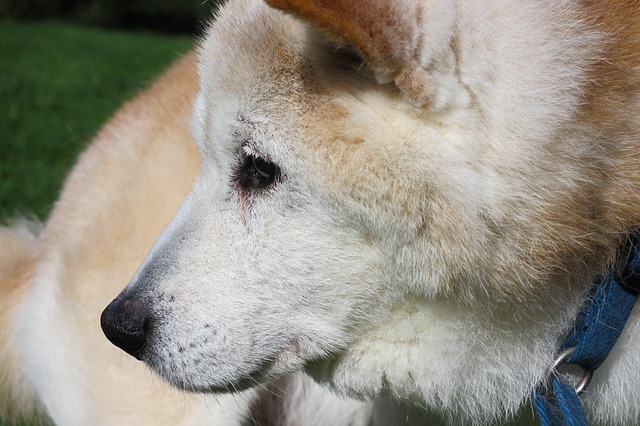Seeing your fur baby in pain is the worst thing a pet lover would ever have to face. Anyone who owns a dog as a pet would never want to be aware of the pain of seeing your dog suffering from hip dysplasia. Hip dysplasia is a non-curable disease. It affects the dogs so badly that these poor creatures have to struggle to carry on their everyday activities. The pain is so intense that it alters your pup’s temperament. All we can do to ease our faithful pup’s agony is taking good care to keep the symptoms under control. Otherwise, surgery is the only option to help your beloved dog get rid of this pain.
What is Hip Dysplasia?
Hip dysplasia in dogs is a common canine hip problem. It is a deformity of the hip joint that occurs during the growth of dogs. The hip joint is a ball and socket joint. The thigh bone is connected to the acetabulum, the pelvis socket, through the femur’s head. For normal growth, both ball and socket should grow at an equally balanced rate. When this uniform growth does not occur during puppyhood, it results in laxity or the joint’s looseness. The attempts that the body makes to adjust this imbalance cause degenerative disease or osteoarthritis. Hip dysplasia is a genetic disorder. A variety of factors play a role in increasing or reducing its symptoms. Body mass, hormonal function, diet, growth rate, exercise, and environmental conditions are the most important determinants of the severity of hip dysplasia symptoms. It is advisable to maintain a healthy body weight, administer measured meals, carrying out regular physical activities, and supplementing essential components through diet to keep the symptoms under control in the dogs with the risk of developing this disease.
Treatment of Hip Dysplasia Symptoms
As soon as you start seeing your pet limping or fearing regular physical activities, you should consult a veteran to diagnose the cause. If, unfortunately, your dog has started developing hip dysplasia, it’s time to pay significant attention to finding out methods for treating the disease. Because, if left ignored, it could cause severe pain to your beloved pet.Unluckily, there is no cure for the disease. But you can stop or reduce the rate of its progression by adopting the following methods.
- Use of NSAIDs
- Use of dietary supplements
- Daily exercising
- Physical therapies
- Weight control strategies
- Acupuncture
- Stem cell treatment
- Laser treatment
- Use of Chinese medicine
Surgery Options for Hip Dysplasia
If you have tried all the above-mentioned treatment options but, unfortunately, nothing has worked effectively for your poor pup, it’s now time to gather some courage to let your babe go through the surgical procedure. Medical science has developed significantly in the last century, and the veterinary industry hasn’t been left behind in this progress. Do not fear the surgery because it is nothing out of the ordinary nowadays.There are many surgical options available for hip dysplasia. They include:
- Triple pelvic osteotomy
- The Femoral head ostectomy
- Total Hip Replacement
Triple Pelvic Osteotomy
Triple pelvic osteotomy is a surgical procedure that is performed in moderate or large breeds of dogs. It is usually conducted to treat the early clinical signs of hip dysplasia. The procedure is typically used to treat puppies younger than one year of age. The purpose of this procedure is to treat the laxity in the coxofemoral joint. It brings the ball and socket in congruity to remove the stress on the hip joint. If the surgery is done in proper time, it prevents th development of osteoarthritis.PROCEDUREThe procedure involves cutting bones in the pelvic griddle to rotate the socket over the femoral head. A bone plate is used to stabilize the bones afterward. This surgery can be performed on both sides simultaneously. But it is better to keep a gap of four to six weeks to save your pet from double discomfort.POST SURGERY RECOVERYThe surgery usually needs two nights stay in the hospital after the procedure. A strict six to eight weeks rest at home is advised by the doctor. Regular X Rays and follow-ups should be taken for the six weeks after the procedure to keep a check on the healing process of the operated site.
The Femoral Head Ostectomy
The surgery works excellently to help the patient dogs get rid of the pain caused by hip dysplasia. It is also used for hip fractures and hip luxation.PROCEDUREThe femoral head ostectomy is the surgical procedure in which the ball of the joint is cut and removed along with its attachment portion. In short, it removes the hip joint that the femur makes with the socket. When the affected joint is cut and removed, the body starts forming a new hip a few months post-surgery. The newly formed hip is made up of scar tissues instead of the normal bone and cartilage hip.POST SURGERY RECOVERYPostoperative care for this surgery requires early use of the leg after the procedure for the best possible results. The pet owners need to focus on facilitating physical exercises such as swimming and physical therapies.
Total Hip Replacement
This surgery is an excellent option to restore the normal function of the hip. The surgery works well for all breeds of dogs at any age or stage of the disease.PROCEDUREThe whole set of femoral head and acetabulum is replaced with its artificial alternative. The procedure is the same as the one performed in humans. The artificial socket or the acetabular component is made up of ultra-high molecular weight polyethylene, and the artificial femoral head is made with either cobalt chrome or titanium. The two components are either cemented together or pressed to fix.POST SURGERY RECOVERYUsually, the patient dogs recover in a span of six to eight weeks, but a 12-week recovery is more effective for complete healing. During this period, a device-assisted short distant walk is advised. Strenuous exercises should be avoided to prevent the dislocation of the new hip.





Leave a Reply